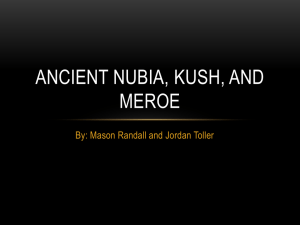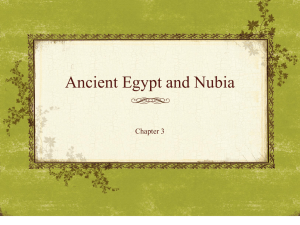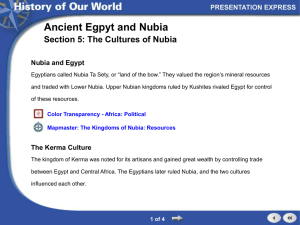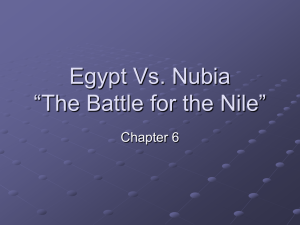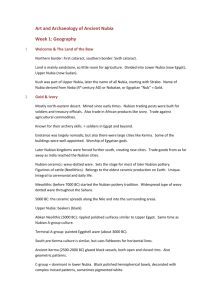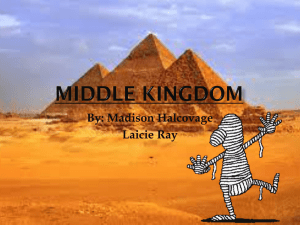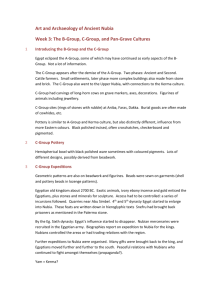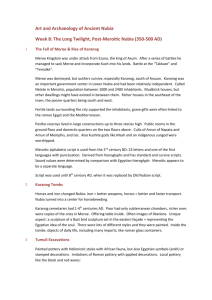Document
advertisement
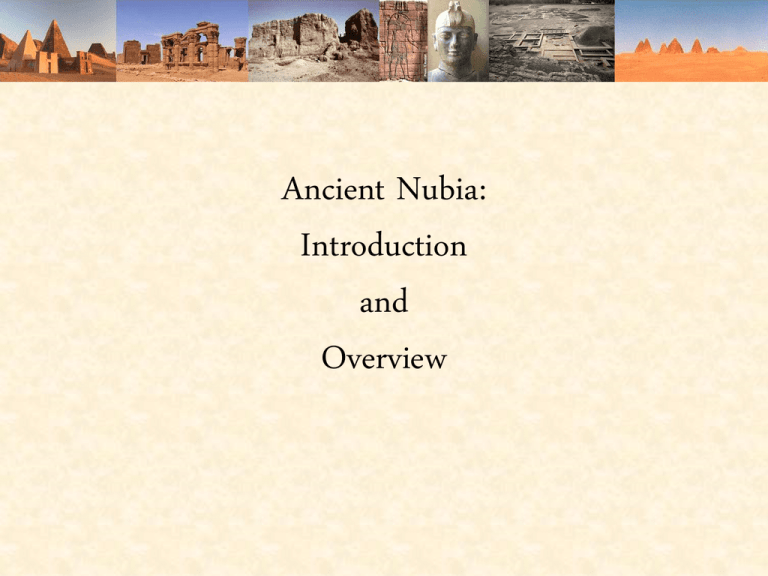
Ancient Nubia: Introduction and Overview Why Nubia? What comes to mind if Ancient Africa is mentioned? Early Man? Endless Desert? The Pyramids? King Tut? Usually only Egypt, although there were several other major civilizations in Ancient Africa, both indigenous and colonial (such as Carthage, a colony of the Phoenicians). Relief from the temple of Ramses II at Abu Simbel, surprisingly in Nubia! Two of these (the civilizations of Kerma and Napata/Meroe) were located in Nubia in the modern nation of Sudan (although the region known as Nubia extends into the southern portion of modern Egypt). Areas of Interest The study of Ancient Nubia is on the fringes of a variety of subject areas covered by various academic departments such as History, Anthropology/Archaeology, Egyptology, Art History, Classical/Near Eastern Studies and African Studies (which is part of the reason it doesn’t often get covered adequately). It also doesn’t help that the native language used by these people for writing has not in large part been deciphered, except of for things like names. There has been no “Rosetta Stone” found. Origins The beginnings of civilization in Nubia parallel the origins of the Early Dynastic (c. 3100 to 2700 BC)and Old Kingdom in Egypt (c. 2700-2200 BC. As Egypt is so closely tied to developments in Nubia for most of the period dealt with in this course there will be significant coverage of Egypt as well. The Culture The culture that developed in Nubia was heavily influenced by Egyptian political, religious and trade activities for much of it’s history, most notably in the later Napatan/Meroitic kingdom, but Egyptian influence is seen even in the period of the kingdom of Kerma and earlier with Egyptian materials being found in burials and settlement sites. Religious Influence As will be seen later in the course, the Kerma civilization practiced elaborate mound burials for its important leaders, which were mostly unlike the burials of Egyptian kings and their religious practices are mostly unknown, but the Napatan/Meroitic kingdom adopted much of the Egyptian religion and culture, even to the point of adopting the principle Egyptian gods (Amun, Isis, Horus, Osiris) as their own and adopting the Old Kingdom style of royal burial using pyramids (which had long gone out of fashion in Egypt itself). Major Gods of Napata/Meroe Amun Isis Horus Osiris Apedemak Maps for Map Portion of Exam Note that on this map there is a new country (South Sudan) which is not shown. More Maps Course Overview The majority of this course will focus on the kingdoms of Kerma and Napata/Meroe and the succeeding period of Aksumite domination and Christian Nubia. The Islamic conquest will mark the end of the course, as it is a distinct cultural, religious and linguistic break from the previous periods and is also more clearly in the Medieval period. Images from Kerma Images from Napata/Meroe Famous Sites of Lower Nubia Good Luck Enjoy!
